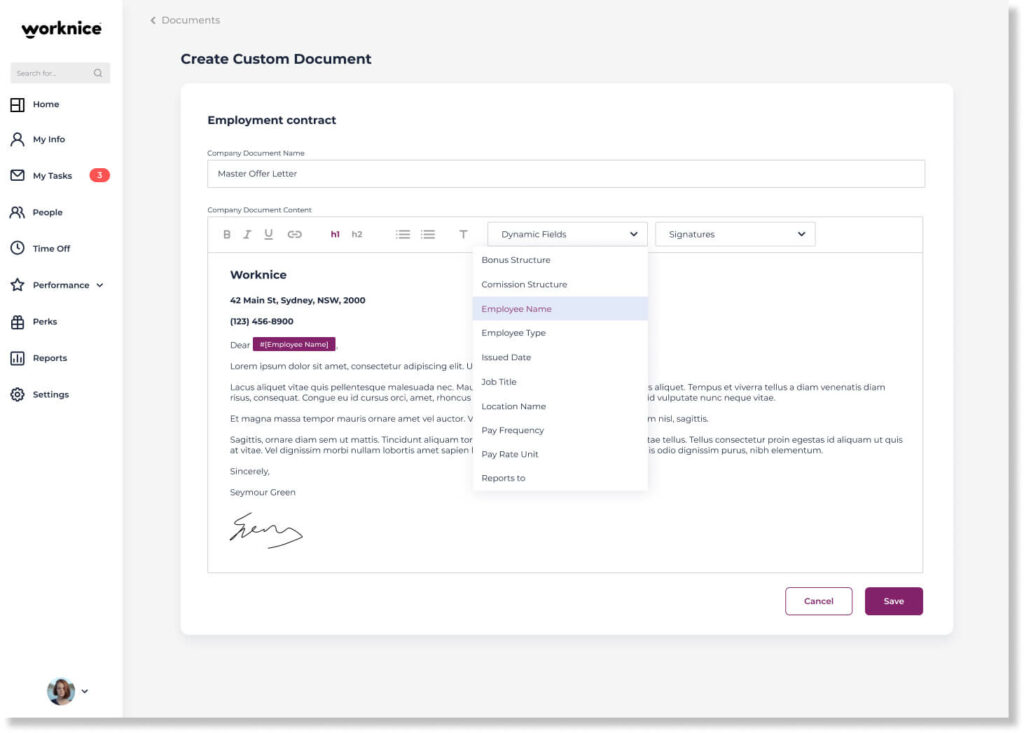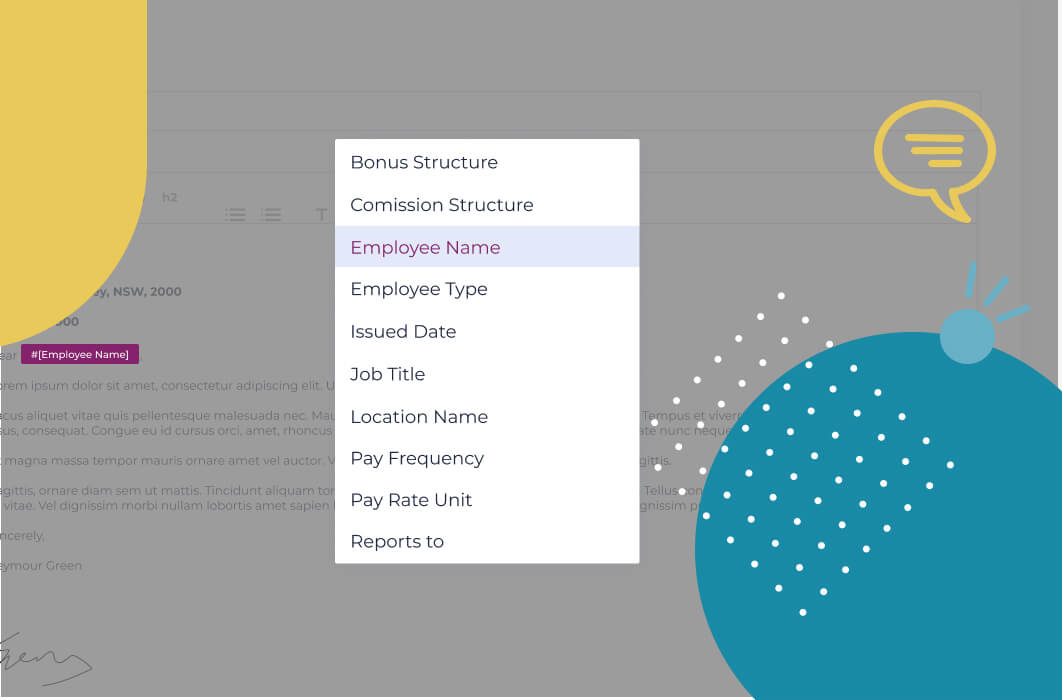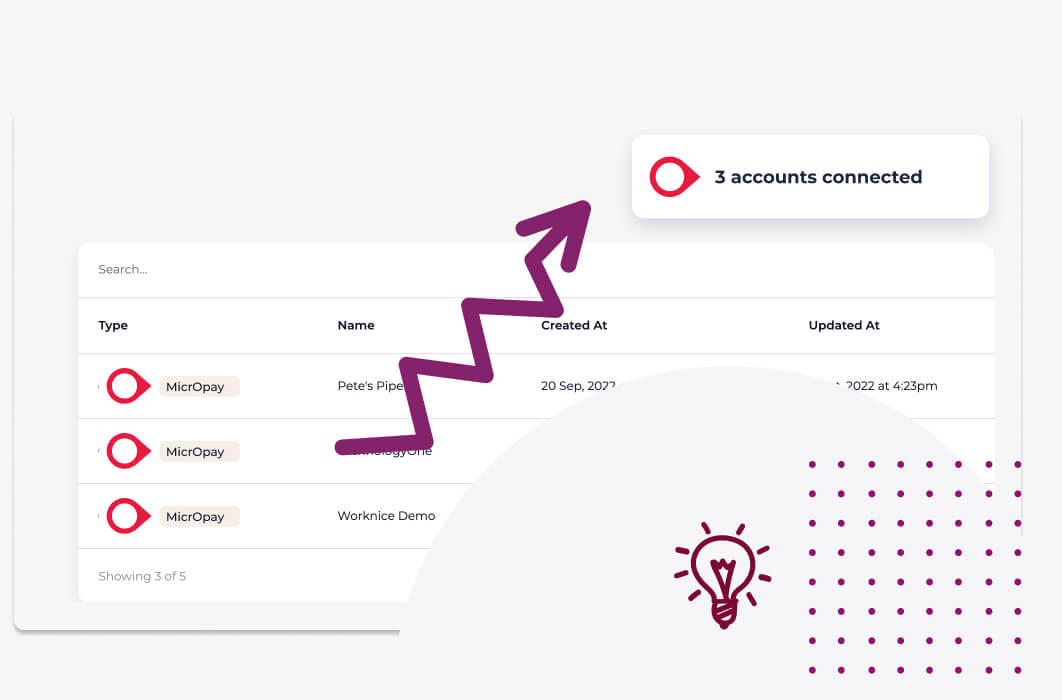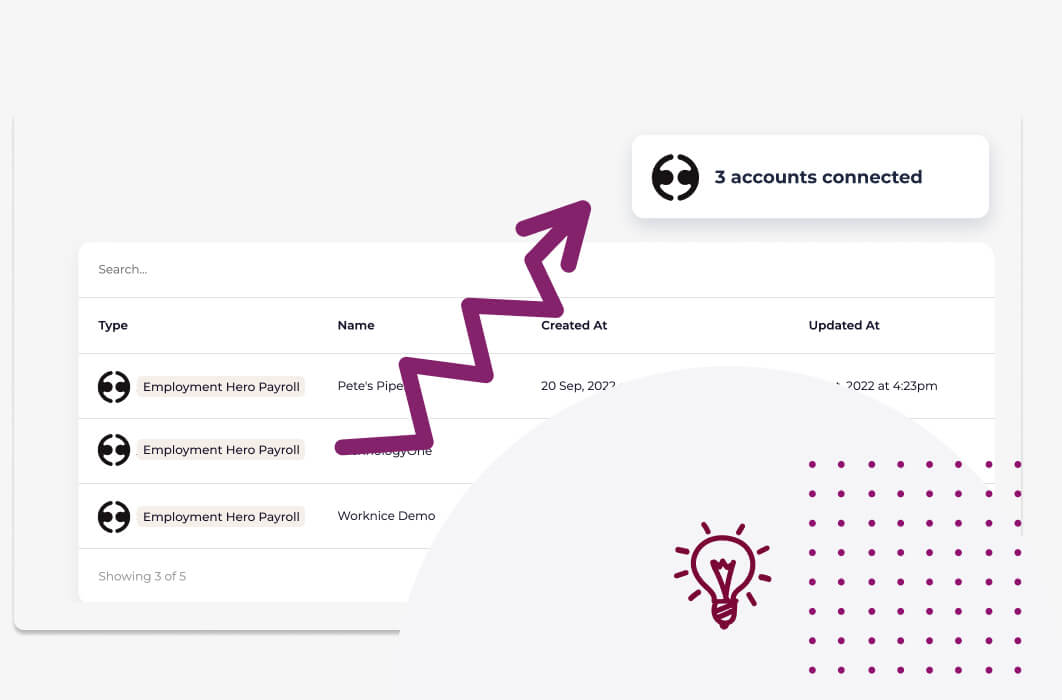Dynamic fields are a powerful feature that enable documents to dynamically change data depending on the user it is being sent to.
One of the cornerstones of Worknice is the ability to streamline your HR processes and by doing so ensure you maintain compliance. As the platform has expanded, so too has the sophistication of our document management – and dynamic fields are a perfect example of that.
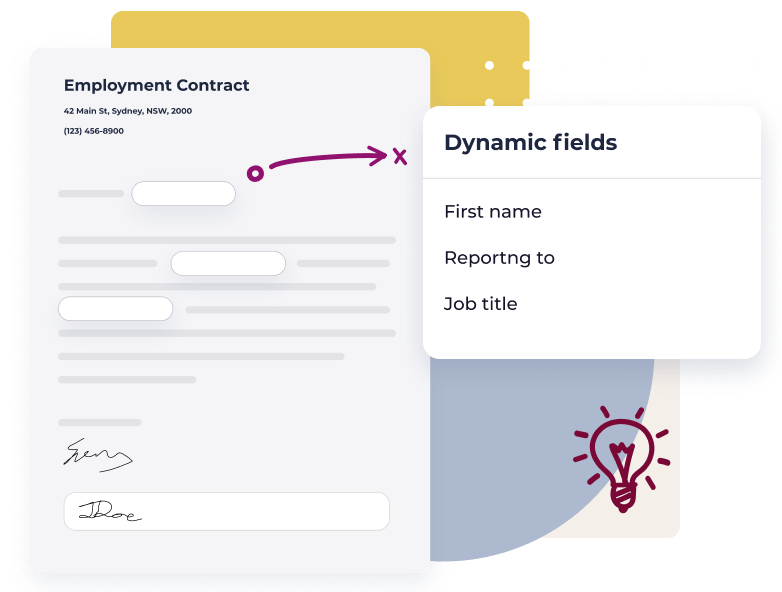
The new ‘dynamic field’ feature for documents
At a glance, you can see just how powerful using dynamic fields can be in terms of streamlining process. Consider this for a moment. You are about the hire a new employee and you need to put together an employment contract for them. You pick the relevant template from the Worknice library of documents, and you are faced with a plethora of fields that need updating; name, direct report, job title, payment type and wage, start date – the list goes on an on. This type of manual admin is never fun, especially when you need to do it over and over again.
With dynamic fields, this type of manual admin is a thing of the past. Instead, all of these fields are dynamically updated for you – no manual work required. So not only does this save you time, it ensures no accidental data input errors occur.
What fields can be made dynamic?
Dynamic fields available fall into three categories; fields that pull in employee details, Document fields, and finally, employment fields.
By the time it comes to allocating a range of documents to an employee, all of these fields should already be filled out in the Worknice employee database.
Employee fields
- Full name
- First name
- Address
- Gender identity
- Birth date
- Personal email
- Work email
- Personal phone
- Emergency contact name
- Emergency contact relationship
- and finally Emergency contact phone
Document fields
- Date completed
- Employee signature
Employment fields
- Start date of employment
- Employment type
- Job title
- Reports to
- Payroll calendar
- Salary
- Location
- and lastly, department
